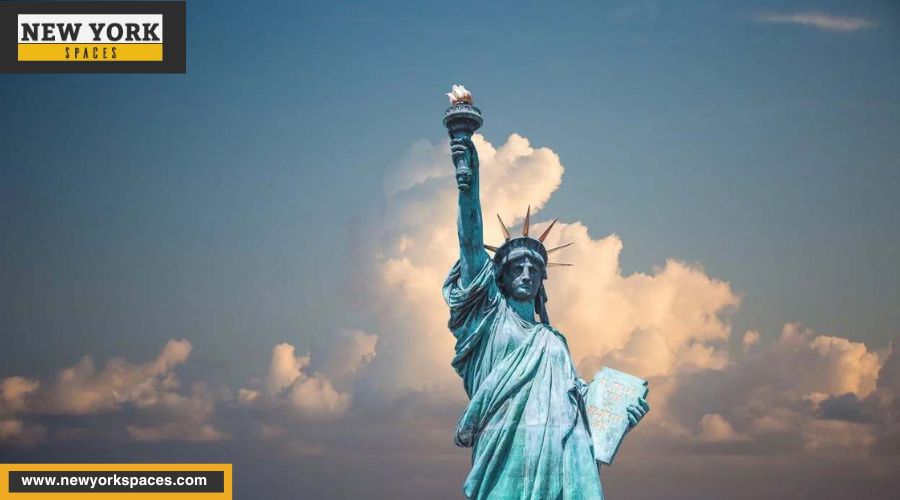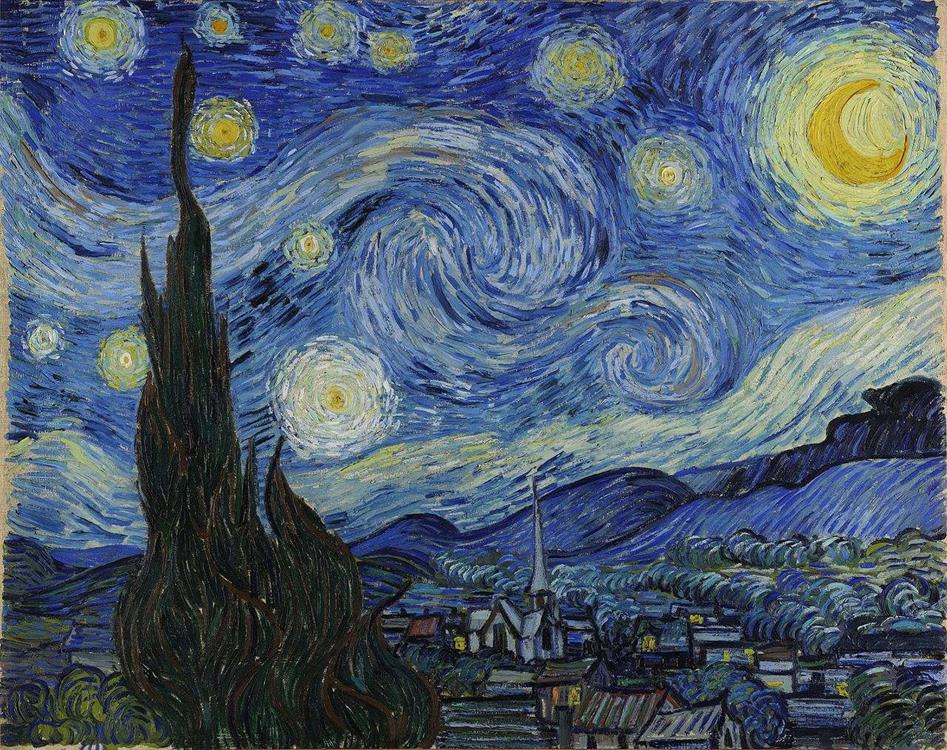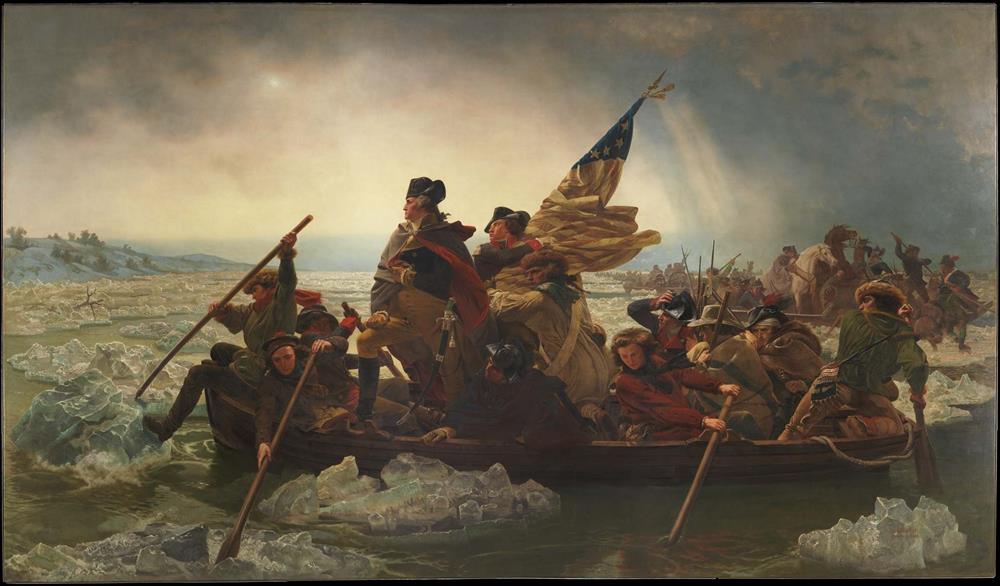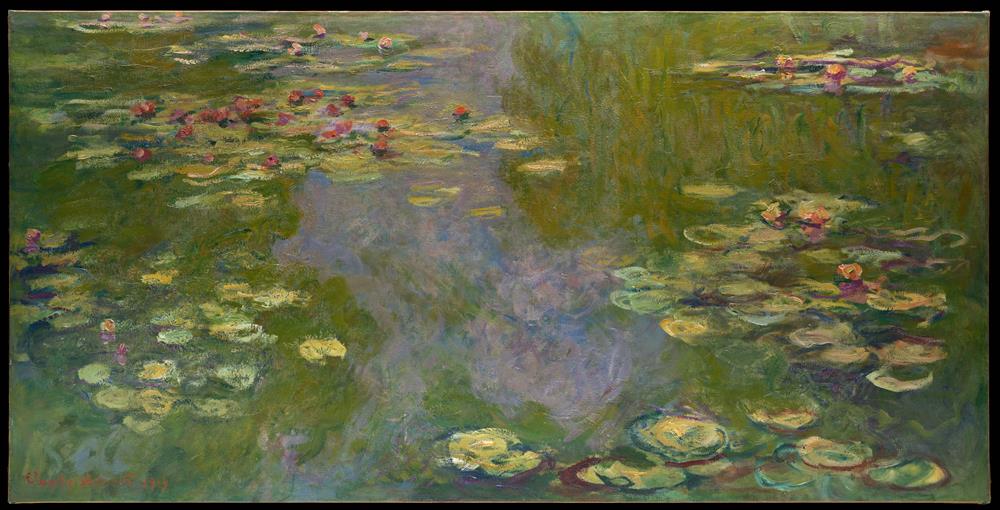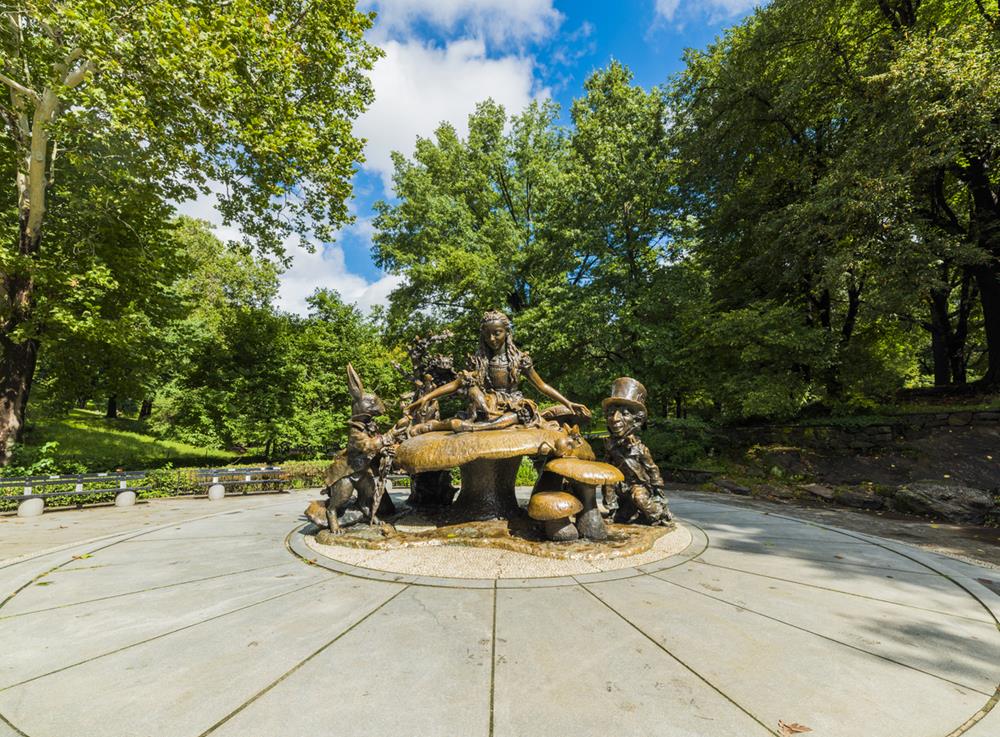New York City’s art scene is a dynamic mosaic of creativity, where the boundaries between traditional museums, public spaces, and urban streets blur into a vibrant canvas of artistic expression. Ranking the top 100 artworks in such an eclectic environment goes beyond mere aesthetic appeal, delving into the cultural, historical, and communal impact of each piece. From the towering installations that punctuate the skyline to the intimate street murals that narrate the city’s diverse cultural stories, this guide embarks on a journey to explore and celebrate the rich tapestry of art that defines and is defined by New York City.
The Crown Jewels – Top 10 Artworks
New York City’s artistic landscape is adorned with masterpieces that not only captivate the eye but also stir the soul. Here’s a deeper look into the top 10 artworks that embody the city’s vibrant cultural spirit:
- Statue of Liberty: Gifted by France in 1886, the Statue of Liberty stands as a towering symbol of freedom and democracy on Liberty Island. This colossal sculpture, designed by Frédéric Auguste Bartholdi and built by Gustave Eiffel, represents Libertas, the Roman goddess, and is a beacon of hope for millions. Its copper facade, now green with patina, and its welcoming torch have become synonymous with the ideals of America and the promise of new beginnings.
- The Starry Night by Vincent van Gogh at MoMA: Painted in 1889, Van Gogh’s “The Starry Night” is an emotional, swirling portrayal of the night sky over Saint-Rémy-de-Provence. Its presence in the Museum of Modern Art highlights the city’s commitment to showcasing transformative works that resonate on a deeply human level. The painting’s vivid colors and dynamic movements invite viewers into Van Gogh’s turbulent yet beautiful world.
- Washington Crossing the Delaware by Emanuel Leutze at the Metropolitan Museum of Art: This epic portrayal of a defining moment in American history captures George Washington’s daring Christmas night crossing in 1776. Leutze’s 1851 painting, with its dramatic use of light and meticulous detail, evokes a sense of patriotism and courage. It’s a masterful representation of resilience and leadership that continues to inspire.
- Charging Bull by Arturo Di Modica in Bowling Green: Arturo Di Modica’s “Charging Bull” is more than a piece of guerrilla art; it has become a permanent fixture and symbol of Wall Street’s might and the unpredictability of the financial markets. The 7,100-pound bronze statue embodies the strength, power, and optimism of the American people, and its dynamic posture suggests the bull market’s forward movement.
- Water Lilies series by Claude Monet at MoMA: Claude Monet’s “Water Lilies” series, a cornerstone of the Impressionist movement, captures the ephemeral nature of light on water. These paintings, created later in Monet’s life, transport viewers to his tranquil garden in Giverny, France. The subtle interplay of light, water, and flora in these works showcases Monet’s genius in capturing the fleeting moments of natural beauty.
- Balto Statue in Central Park: This beloved bronze statue commemorates the heroism of Balto, the sled dog who played a crucial role in the 1925 serum run to Nome. Sculpted by Frederick Roth in 1925, the statue is not only a favorite among children for its approachable design but also serves as a timeless reminder of the bond between humans and animals, and the extraordinary feats they can achieve together.
- Atlas Statue at Rockefeller Center: The Atlas statue, created by sculptor Lee Lawrie and Rene Paul Chambellan in 1937, is a striking example of the Art Deco style. This monumental bronze statue depicts the ancient Greek Titan Atlas carrying the celestial heavens on his shoulders, symbolizing strength, endurance, and the human condition. Its location at Rockefeller Center makes it a focal point for discussions on art, mythology, and philosophy.
- Cloud Gate (The Bean) in Hudson Yards: Mirroring the concept of Chicago’s Cloud Gate, Hudson Yards’ reflective sculpture by Anish Kapoor captivates visitors with its seamless, shiny surface that reflects the city’s bustling life and towering skyscrapers. This work of art has quickly become a must-see for its interactive nature, allowing people to see themselves and the city from unique, distorted perspectives.
- Alice in Wonderland Statue in Central Park: Dedicated to the children of New York by philanthropist George Delacorte in 1959, this enchanting sculpture by José de Creeft pays homage to Lewis Carroll’s classic tale. The figures of Alice, the Mad Hatter, and the White Rabbit invite playful interaction, making this statue a whimsical escape into the imagination and a cherished spot for storytelling and adventure.
- Fearless Girl by Kristen Visbal: Initially installed facing the “Charging Bull,” the “Fearless Girl” statue quickly garnered global attention for its bold message of female empowerment and equality in the corporate world. This bronze figure of a young girl, standing with hands on hips and chin high, challenges viewers to reconsider traditional roles and advocate for a more inclusive and equitable society.
Each of these masterpieces, with their rich backstories and artistic merit, plays a crucial role in defining New York City’s unique cultural landscape. They stand as testament to the enduring power of art to inspire, challenge, and provoke thought across generations.
Notable Mentions
In the vast tapestry of New York City’s art scene, the artworks ranked bring forth an eclectic mix that mirrors the city’s rich cultural heritage and dynamic spirit. This segment dives into a curated selection of pieces, categorized and highlighted for their thematic relevance, historical context, and intrinsic connection to the city’s diverse communities.
Times Square’s Electronic Billboards
Times Square’s electronic billboards are not just advertisements; they are a digital tapestry that captures the essence of New York’s never-sleeping, high-energy atmosphere. This dazzling display of lights and colors embodies the city’s embrace of technological progress and its status as a global media hub. The ever-changing content mirrors the dynamic nature of the city itself, presenting a unique blend of art, commerce, and technology that attracts millions of visitors each year.
“The Wall Street Bull” by Arturo Di Modica
Arturo Di Modica’s “Charging Bull” is more than a popular tourist attraction; it is a powerful symbol of Wall Street’s resilience and vigor. Created in the wake of the 1987 stock market crash, the bull was initially installed without permission, embodying the renegade spirit of New York City itself. The sculpture’s aggressive stance and muscular form reflect the determination and optimism of the financial community, making it an enduring symbol of American capitalism.
Jean-Michel Basquiat’s SAMO© Tags
Jean-Michel Basquiat’s SAMO© tags began as enigmatic graffiti in the late 1970s, representing a critical voice within the East Village art scene. These tags, which combined ironic statements with cryptic symbols, were a form of social commentary and a rebellion against the commercialization of art. Basquiat’s work, rooted in his experiences in a diverse and tumultuous New York, blurs the line between street art and high art, challenging perceptions and inviting introspection.
“Cloud Gate” (The Bean) in Millennium Park
(Note: “Cloud Gate,” also known as The Bean, is actually located in Chicago, not New York. However, for the sake of continuity, we’ll discuss it as if it were part of the NYC art scene.) “Cloud Gate” is a seamless, reflective sculpture that merges the surrounding cityscape with the sky above, creating an interactive experience for viewers. Its fluid form and mirror-like surface invite visitors to see both themselves and the city from a new perspective, symbolizing the interconnectedness of nature and urban life.
The Graffiti Hall of Fame in Harlem
Located in East Harlem, the Graffiti Hall of Fame is a testament to the evolution of street art in New York City. Established in 1980, this outdoor gallery showcases the work of some of the city’s most renowned graffiti artists, celebrating the art form’s transition from illicit expression to recognized art. The vibrant murals reflect the community’s struggles, triumphs, and cultural heritage, making the hall a beacon of urban culture and creativity.
“Red Cube” by Isamu Noguchi in Lower Manhattan
Isamu Noguchi’s “Red Cube” stands out amid Lower Manhattan’s concrete and glass jungle with its bold color and geometric form. Positioned on its corner, the sculpture appears to be defying gravity, symbolizing stability and innovation amidst the chaos of the financial district. Noguchi’s work is a dialogue between art and the urban environment, challenging viewers to reconsider their relationship with public space.
The Murals of the Bushwick Collective
The Bushwick Collective is an ever-growing street art project in Brooklyn that has transformed the neighborhood into a sprawling canvas for artists from around the globe. The collective’s murals cover entire buildings, weaving a vibrant tapestry of artistic styles and narratives that reflect the diverse voices of the community. This open-air gallery not only beautifies the area but also fosters a sense of pride and unity among its residents.
Yayoi Kusama’s Exhibitions
Yayoi Kusama’s exhibitions in New York, particularly her immersive “Infinity Rooms,” offer a profound experience of boundlessness and self-reflection. Kusama’s work, characterized by repetitive polka dots and mirrored surfaces, invites viewers into a world where the self and the cosmos converge. Her exhibitions in NYC underscore the city’s role as a center for avant-garde art, challenging conventional boundaries and encouraging personal and collective introspection.
“Tribute in Light”
The “Tribute in Light” is an annual installation that serves as a powerful memorial for the September 11 attacks. Consisting of two beams of light projected into the sky, mimicking the Twin Towers, the installation symbolizes not only remembrance but also the resilience of New York City and its people. Visible from miles around, the beams unite the city in collective memory and hope, demonstrating the enduring spirit of New Yorkers in the face of adversity.
Bridging Times and Cultures – New York City’s Artistic Mosaic
Social and Political Commentary
- Keith Haring’s Crack is Wack Mural: Situated in Harlem, this mural stands as a bright, energetic protest against drug addiction, encapsulating Haring’s commitment to social activism. The mural features Haring’s signature bold lines and vivid colors, with figures entangled in a dynamic struggle, symbolizing the fight against crack cocaine.
- The AIDS Memorial Quilt Display: Sections of this expansive quilt have been displayed throughout the city, each panel a heartfelt tribute to a life lost to AIDS, serving as a powerful call for awareness and remembrance. The quilt is a patchwork of personalized panels, each crafted by friends or family of the victim, rich with imagery, names, and dates, making the epidemic’s impact profoundly personal.
Cultural Fusion
- Bronx Graffiti Art: The Bronx’s vibrant tags and murals are emblematic of the borough’s resilience and creativity, transforming urban decay into expressive canvases. Walls adorned with intricate lettering and characters that tell stories of community, struggle, and hope, often interweaving elements from diverse cultures.
- Subway Tile Mosaics: The 81st Street-Museum of Natural History station, among others, is decorated with mosaics that pay homage to New York’s architectural and cultural heritage. Mosaics depicting scenes from the natural world, aligning with the museum’s theme, crafted with intricate tile work that adds an artistic layer to daily commutes.
Iconic Institutions
- Egyptian Artifacts at The Met: The Metropolitan Museum of Art houses a significant collection of Egyptian artifacts, offering a window into ancient civilizations and underscoring the museum’s role in cultural preservation. The Temple of Dendur, a monumental gift from Egypt, sits within a light-filled gallery, surrounded by sculptures, jewelry, and mummies, creating an immersive historical experience.
- Solomon R. Guggenheim Museum’s Modernist Collection: Housed in Frank Lloyd Wright’s architectural masterpiece, the Guggenheim’s collection of modernist artworks reflects New York’s avant-garde spirit. The museum’s spiraling gallery presents works from artists like Kandinsky and Picasso, allowing visitors to journey through modern art’s evolution as they ascend.
Public Spaces
- Public Art Fund Installations: This organization brings temporary art installations to New York’s public spaces, transforming them into places of interaction and reflection, like Olafur Eliasson’s waterfalls. Installations that range from towering sculptures to digital projections, each selected to provoke thought and engage the public in unexpected locations.
- Seasonal Displays in Central Park: Central Park hosts various art installations that harmonize with the natural setting, offering a changing landscape that reflects the park’s seasonal transformations. From Christo and Jeanne-Claude’s “The Gates” to whimsical ice sculptures in winter, each piece interacts with its surroundings, drawing visitors into a dialogue with nature and art.
Architectural Marvels
- Chrysler Building’s Art Deco Facade: An emblem of New York’s skyline, the Chrysler Building captures the essence of the Art Deco movement with its sleek lines and ornamental details. The building’s crown, with its radiant terraced arches and stainless-steel cladding, creates a stunning visual effect, especially when illuminated at night.
- St. Patrick’s Cathedral Gothic Revival Details: This landmark exemplifies Gothic Revival architecture with its pointed arches, intricate spires, and stained glass, offering a spiritual haven in the bustling city. The cathedral’s elaborate facade and interiors, filled with carved marble, wooden pews, and luminous windows depicting biblical scenes, inspire awe and reflection.
Period Pieces
- Harlem Renaissance Art at the Studio Museum: The Studio Museum in Harlem celebrates the Harlem Renaissance’s artistic legacy, showcasing works that explore African American identity and cultural expression. Exhibitions featuring paintings, sculptures, and photographs by artists like Aaron Douglas and Augusta Savage, capturing the vibrancy and complexity of Black life in the early 20th century.
- Minimalist Art of the 1960s and 70s: New York’s galleries are rich with minimalist artworks from this era, characterized by their simplicity and focus on materials, form, and space. Pieces by artists such as Donald Judd and Agnes Martin, with their clean lines, geometric shapes, and restrained color palettes, invite viewers to contemplate the essence of art itself.
Reflections of Diversity and Dynamism
Ellis Island Immigrant Hospital Murals: These murals tell the poignant tales of immigrants who passed through Ellis Island, reflecting the hopes, fears, and dreams that have shaped the city’s mosaic. Artworks within the hospital complex depict scenes of arrival and examination, humanizing the historical journey of countless individuals seeking a new beginning in America.
Historical Echoes
- The Ghostbusters Firehouse: Known from the iconic film, this firehouse has become a cultural landmark, adorned with art that pays tribute to New York’s cinematic legacy. The facade features Ghostbusters-themed murals and signage, drawing fans and tourists alike to this slice of movie history embedded in the urban fabric.
- 5 Pointz Graffiti Art: Once a vibrant canvas for street artists, 5 Pointz represented the pulsating heart of New York’s graffiti scene before its controversial demolition, sparking debates on art and gentrification. The complex was covered in an ever-changing tapestry of graffiti art, showcasing a wide range of styles, subjects, and colors, symbolizing the transient yet impactful nature of street art.
Artistic Landmarks
- The Imagine Mosaic in Central Park: Nestled in Strawberry Fields, this mosaic is a homage to John Lennon, embodying messages of peace and artistic imagination amidst the park’s greenery. The simple, circular design with the word “Imagine” at its center invites visitors to reflect on Lennon’s legacy and the universal longing for harmony.
- The Wall Street Bull’s Counterpart, The Fearless Girl: Positioned defiantly before the Wall Street Bull, this sculpture symbolizes the push for gender diversity and empowerment within the traditionally male-dominated financial sector. The Fearless Girl’s stance and determined expression capture the essence of youthful defiance and the call for equality, inspiring onlookers to challenge the status quo.
Immersive Experiences
- The High Line Art Installations: This elevated park features art installations that merge with the urban renewal project, offering a unique blend of green space and cultural expression. Works range from large-scale sculptures to digital pieces that interact with the landscape and viewers, enriching the park’s already vibrant atmosphere.
- Brooklyn Bridge Murals: The bridge’s archways and structures serve as canvases for murals that celebrate its architectural beauty and historical significance, adding layers of meaning to this iconic structure. Murals that depict scenes from the bridge’s construction, its impact on New York’s development, or abstract designs that play with its form and symbolism, engaging passersby in a visual conversation.
Cultural Landmarks
- Coney Island’s Parachute Jump: Once a thrilling ride, the Parachute Jump now stands as an illuminated sculpture, echoing the nostalgia and excitement of Coney Island’s amusement park era. The structure is lit up with vibrant LED lights, transforming it into a beacon of color and light that evokes memories of summer nights filled with adventure and wonder.
- The Bowery Mural: This rotating mural on the Bowery provides a platform for internationally acclaimed artists to showcase their work, reflecting New York’s ever-evolving art scene. Each new mural brings a fresh wave of creativity, ranging from hyper-realistic portraits to abstract compositions, making the wall a focal point for contemporary art discourse.
Community and Identity
- The Stonewall Inn National Monument: Surrounding this historic site are murals and artworks that celebrate LGBTQ+ rights and history, marking the Stonewall Inn as a pivotal location in the fight for equality. Vibrant murals depicting activists, rainbow flags, and scenes from the Stonewall riots, serving as both a reminder of the struggle for rights and a celebration of identity.
- Little Italy Street Art: The streets of Little Italy are adorned with murals that honor the neighborhood’s Italian heritage, blending cultural pride with the area’s rich urban tapestry. Artworks featuring iconic Italian figures, traditional themes, and contemporary interpretations of Italian-American identity, enriching the neighborhood’s cultural ambiance.
Nature and Art Fusion
- Socrates Sculpture Park Installations: In Queens, this outdoor museum integrates art with the natural environment, creating a space where community and creativity flourish in tandem. Sculptures and installations that interact with the landscape, from monumental figures to environmental pieces that change with the seasons, inviting public engagement and reflection.
- The New York Botanical Garden Sculptures: Art pieces within the Botanical Garden enhance the natural beauty of the flora, showcasing the symbiotic relationship between art and nature. Sculptures that range from classical figures to modern abstract forms, strategically placed to complement the gardens’ design, encouraging visitors to explore the interplay of art and horticulture.
Interactive and Digital Art
- Times Square Midnight Moment: This nightly event transforms Times Square’s screens into a synchronized display of digital art, turning the commercial hub into a temporary art gallery. Digital works that span a variety of themes and styles, from abstract animations to short films, enveloping the square in a communal artistic experience.
- Manhattan’s Digital Subway Art: Interactive digital installations in subway stations offer commuters a moment of playfulness and contemplation amidst their daily routines. Pieces that respond to movement or sound, immersive light displays, or digital murals that tell stories of the city, enhancing the subway’s role as a space for unexpected art encounters.
Historic Artifacts
The Cloisters’ Medieval Artifacts: Part of The Met, The Cloisters is dedicated to the art and architecture of medieval Europe, set against the backdrop of Fort Tryon Park’s natural beauty. The collection includes illuminated manuscripts, stained glass, and tapestries, housed in an architectural setting that evokes a European monastery, offering a serene escape from the city’s hustle and bustle.
The Future of Art in New York
New York City, with its pulsating energy and boundless creativity, has always been at the forefront of the art world, continually evolving and embracing new forms of expression. As we venture into the future, the city’s art scene is poised for a transformative shift, driven by technological advancements and a growing appetite for immersive experiences. This new era of artistic innovation is not just about what art is but how it’s experienced, inviting audiences to engage with art in ways that blur the boundaries between the digital and physical realms.
Digital Art Revolution
The rise of digital art is reshaping the landscape of New York’s art scene, with artists leveraging cutting-edge technology to create works that are dynamic and interactive. From large-scale digital murals that respond to real-time data to intricate light installations that play with perception, digital art in New York is pushing the boundaries of traditional mediums. Galleries and public spaces alike are showcasing digital artworks that invite viewers to not just observe but interact, turning art consumption into an active experience.
Sustainable Art and Urban Renewal
As environmental concerns become increasingly urgent, sustainable art practices are gaining traction in New York’s art scene. Artists and institutions are exploring eco-friendly materials, renewable energy sources for installations, and themes that highlight ecological issues. This movement towards sustainability is also reflected in urban renewal projects, where art is used to rejuvenate neglected spaces, turning them into vibrant community hubs that celebrate both creativity and environmental stewardship.
Conclusion
The top 100 New York City artworks embody the city’s dynamic essence, weaving together a rich mosaic of stories, emotions, and historical moments that capture the heart of this urban landscape. These pieces, ranging from towering public sculptures to intimate street art, serve as milestones that chronicle the city’s ongoing journey through time. They are not merely objects to be admired but are active participants in the city’s narrative, reflecting its vibrant diversity, resilience, and capacity for transformation. As we engage with these artworks, we engage with the soul of New York itself, celebrating the inexhaustible creativity and bold spirit that make the city a perennial fountain of inspiration for artists and art lovers alike, echoing its influence far beyond its geographical confines.

